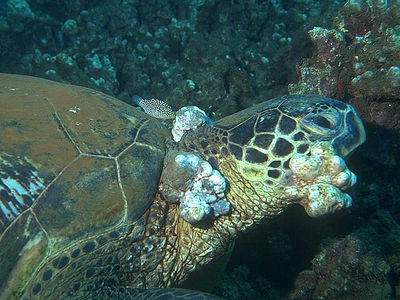Foot-and-Mouth Disease
Foot-and-Mouth Disease ( Aphtae epizooticae )
Template:Foot-and-Mouth Disease

Baltimore Classification
Group IV. Positive single-stranded RNA (picornavirus)
Higher order categories
Order Picrnovirales
Family Picornaviridae
Genus Aphthovirus
Species Bovine rhinitis virus
Description and Significance
This aphthovirus can survive a range of conditions outside of a host cell. It can persist in below-freezing temperatures as well as through the high temperatures of pasteurization, making the eradication of this virus in a cattle population and throughout its byproducts very difficult. Herds are quickly affected to FMD due to their close contact with each other and materials that carry the virus. Cloven-hoofed livestock such as cows, pigs, sheep, goats, and sometimes llama and aplaca herds are the most often affected animals. Outbreaks of FMD have not occurred in the United States since the late 1920's but Asia, Africa, and regions in the Middle East still suffer.
It's highly contagious nature as well as it's relation to the human-affecting enterovirus that causes hand, foot, and mouth disease make it a model virus to study.
Genome Structure
Virion Structure of FMD virus
Reproductive Cycle of FMD virus in a Host Cell
Viral Ecology & Pathology
References
Example:
Weir, Jerry P. " Genomic Organization and Evolution of the Human Herpesviruses." Virus Genes 16.1 (1998): 85-93.
Page authored for BIOL 375 Virology, September 2012
